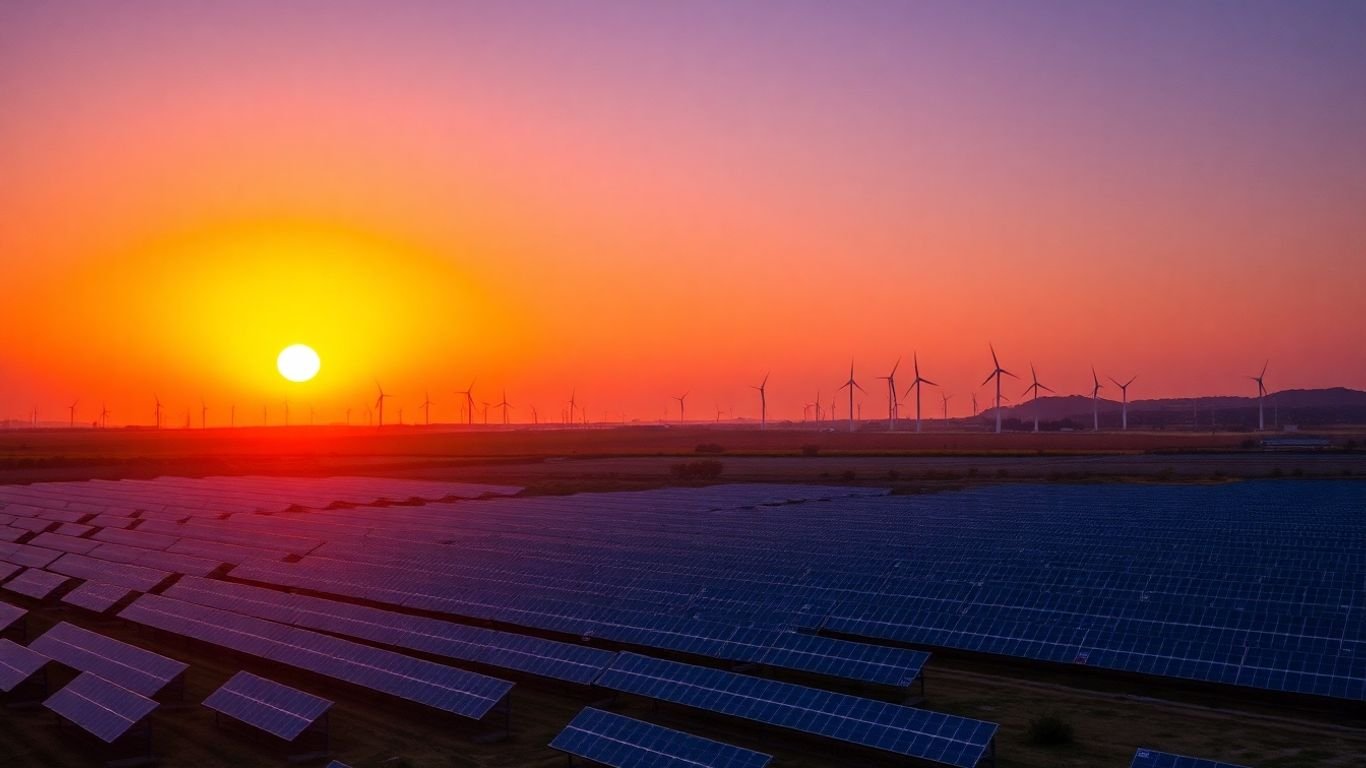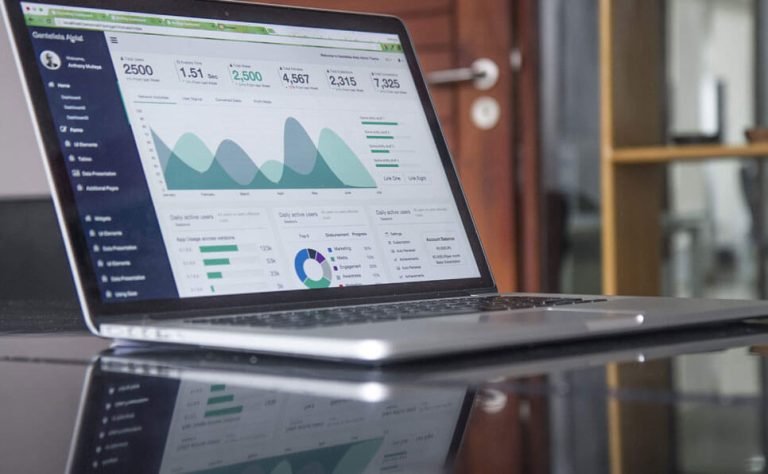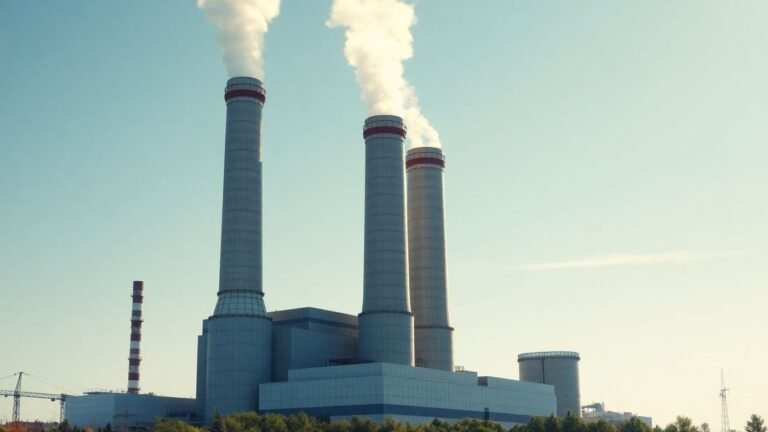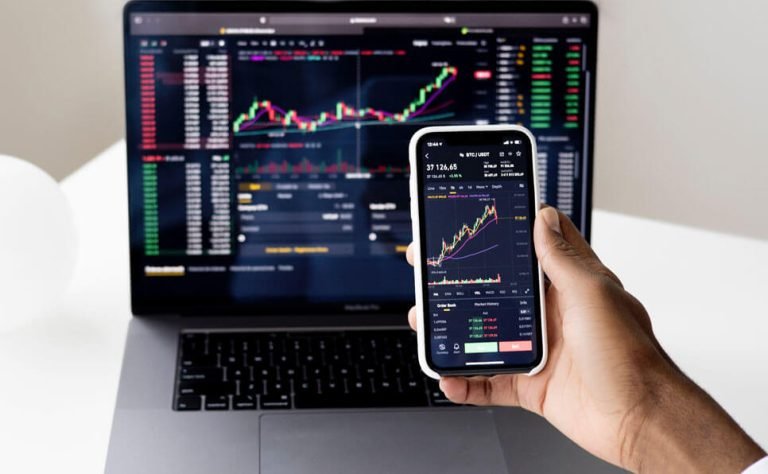How Europe’s Renewable Energy Success is Driving Electricity Prices Negative

Europe is really leaning into renewable energy, and it’s kind of a mixed bag. On one hand, we’re seeing a massive increase in clean power, which is awesome for the planet. But, it’s also causing some weird side effects, like electricity prices dropping so low they become negative. This means there’s more power than we know what to do with sometimes. It’s a sign that we’re doing great with renewables, but our systems aren’t quite ready for all this clean energy yet. It’s a puzzle we’re all trying to figure out.
Key Takeaways
- Europe’s push for renewable energy, especially solar and wind, has led to a record number of hours with negative electricity prices. This happens when there’s more power generated than the grid can handle or store.
- While negative prices might sound good, they create challenges for renewable energy companies trying to make a profit and highlight the need for better storage solutions.
- The current grid infrastructure in Europe isn’t always equipped to manage the large amounts of variable renewable energy, leading to price swings and grid strain.
- There’s a paradox where solar power floods the market during the day, driving prices down, but the continent still relies on fossil fuels for evening peak demand, causing sharp price changes.
- Businesses can benefit from this changing energy market by adopting on-site solar and storage, which helps reduce costs and meet sustainability goals.
The Surge of Europe Renewable Energy and Negative Prices

Europe’s electricity market is going through some wild changes, and it’s all thanks to the massive growth in renewable energy. We’re seeing more hours than ever where electricity prices actually drop below zero. This sounds pretty wild, right? It’s a clear sign that Europe’s push for clean energy, especially wind and solar, is working. But, it’s also creating some headaches for the grid and for everyone involved.
Record Hours of Negative Electricity Prices
This year has been a record-breaker for negative electricity prices across Europe. Think about it: the grid is getting so much power from renewables at certain times that there’s actually too much to handle. When this happens, generators have to pay to get rid of their electricity. It’s a strange situation where cheap electricity Europe is abundant, but the system isn’t quite ready for it.
- First half of 2025 saw a huge jump in negative price events.
- Countries like Sweden, Germany, Spain, and the Netherlands are experiencing this regularly.
- This trend highlights the success of renewable energy growth but also points to infrastructure gaps.
Excess Renewable Generation Overwhelms Grid
So, why are prices going negative? It’s pretty simple: when the sun is shining bright and the wind is blowing strong, we get a massive amount of electricity from solar and wind farms. If demand isn’t high enough at that exact moment, or if there isn’t enough storage capacity, this surplus power has nowhere to go. The grid simply can’t absorb it all, leading to those negative prices. It’s a good problem to have in terms of clean energy generation, but it shows we need to catch up on the infrastructure side.
The core issue is that electricity generation and consumption need to be perfectly balanced at all times. With more variable renewable sources like wind and solar, achieving this balance becomes a lot trickier. When there’s a huge influx of renewable power, and demand is low, prices can plummet. The grid, however, isn’t always equipped to manage this excess.
Complexity for Consumers and Suppliers
While negative electricity prices might sound like a dream deal for consumers, the reality is a bit more complicated. Most households don’t directly see these savings because they’re on fixed electricity plans. Instead, it’s the energy suppliers and sometimes even renewable energy companies that are left dealing with the financial implications. For companies that rely on selling power to make a profit, persistent negative prices can really hurt their bottom line. It’s a sign that while Europe renewable energy is booming, the market mechanisms need to adapt to this new reality.
| Country/Region | Hours of Negative Prices (First 8 Months 2025) |
|---|---|
| Various Europe | 7,841 |
This situation is a clear indicator that while Europe is winning the renewable energy race, it needs to seriously invest in storage and grid flexibility to make the most of this success and avoid these strange negative electricity prices.
Understanding the Economics of Renewable Energy Surpluses
So, Europe’s really leaning into wind and solar, which is great for the planet, right? But sometimes, there’s just too much of a good thing. When the wind is howling and the sun is shining extra bright, we get these moments of wind and solar overproduction. This means we’re generating more electricity than we can use or store at that exact moment. What happens then? The price of electricity can actually drop below zero. It sounds weird, but it means the generators have to pay to get rid of the extra power.
This situation creates a few interesting economic puzzles.
Profitability Challenges for Renewable Companies
When prices go negative, it really messes with the money-making side of things for renewable energy companies. They usually make money by selling the electricity they produce. If they have to pay to sell it, that’s a big problem for their bottom line. It makes it harder for them to pay back loans for their projects or invest in new ones. It’s like a baker having to pay people to take their bread because they baked way too much.
- Reduced Revenue: Direct income from selling power disappears and turns into a cost.
- Investment Uncertainty: It becomes harder to plan for future projects when income is unpredictable.
- Operational Costs: Companies still have to pay for running their facilities, even if they’re getting paid to stop producing.
This isn’t just a minor hiccup; it’s a fundamental challenge to the business models that have powered the renewable energy boom so far. Companies need to find ways to adapt or risk financial strain.
Market Signals for Innovation and Storage
On the flip side, these negative prices are a loud signal from the market. They’re basically shouting, "We have too much renewable energy right now, and not enough ways to store it or use it!" This pushes companies and researchers to think about new solutions. It makes investing in battery storage, for example, look much more attractive. If you can store that cheap, or even negative-priced, energy and sell it later when prices are high, you can make a profit. It’s a bit like buying something on sale and selling it later at full price.
Lagging Storage Solutions Amidst Rapid Growth
Here’s the catch: while the idea of storage is great, the actual technology and infrastructure haven’t quite kept up with how fast renewable energy is growing. We’ve got these amazing solar panels and wind turbines, but we don’t have enough batteries or other ways to hold onto all that clean power. This gap means that even when we have a surplus, we can’t always capture it effectively. It’s like having a huge harvest but not enough storage space in the barn.
- Battery Technology: While improving, large-scale battery storage is still expensive.
- Grid Infrastructure: Our existing power grids weren’t built for such variable energy inputs.
- Policy Support: Sometimes, there aren’t enough government programs to encourage the development and deployment of storage.
Grid Infrastructure and Flexibility in Europe’s Energy Transition
Europe’s electricity grid is really being put to the test with all the new renewable energy coming online. It’s a good problem to have, in a way, because it means we’re making progress on clean energy. But it also means the old ways of managing power just aren’t cutting it anymore. We’re seeing more and more hours where electricity prices go negative, especially when the sun is shining bright or the wind is really blowing. This is because the grid can only handle so much power at once, and sometimes there’s just too much being generated for the demand.
Grid Constraints and Regional Differences
The way the grid is set up across Europe isn’t uniform. Some areas, especially in the south and east, have older or less developed infrastructure. This means they can’t easily absorb all the extra clean energy being produced. Think of it like a highway: if there are too many cars trying to get on a small road, you get a traffic jam. This is happening with electricity too. Some countries have massive queues of renewable projects waiting to be connected to the grid, sometimes for years. It’s a big bottleneck.
The Role of Interconnectors and Storage Capacity
To deal with these issues, we need better connections between countries, called interconnectors. These act like bigger highways, allowing excess power from one place to go to another where it’s needed. It helps balance things out across the whole continent. But even with better connections, we still need places to store all that extra energy when it’s generated but not immediately used. Battery storage is becoming a big deal, but we don’t have enough of it yet to handle the massive amounts of renewable power we’re producing during peak times.
Demand-Side Management and Smart Technologies
Another piece of the puzzle is getting people and businesses to be more flexible with their electricity use. If we can encourage consumers to use more power when it’s cheap and plentiful (like during sunny afternoons) and less when it’s expensive (like during evening peaks), it can really help stabilize the grid. Smart meters and new technologies are making this more possible. It’s about making the grid smarter and more responsive to the availability of clean energy. This shift towards a more flexible and interconnected grid is key to managing the success of Europe’s renewable energy boom.
The current grid management in Europe faces significant challenges due to the rapid increase in renewable energy sources. Insufficient storage capacity and outdated infrastructure in certain regions limit the grid’s ability to absorb and distribute surplus clean energy effectively. Addressing these limitations through enhanced interconnections and widespread adoption of storage solutions is paramount for a stable and efficient energy transition.
The Paradox of Daytime Solar Peaks and Evening Fossil Fuel Reliance

Booming Solar Generation Driving Prices Down
It’s pretty wild how much solar power Europe is generating these days. We’re seeing record-breaking sunshine translate into electricity, and guess what? During the brightest parts of the day, the price of electricity can actually go down, sometimes even below zero. This isn’t just a little dip; in some areas, like Sweden’s SE2 zone, prices have been negative for hundreds of hours already this year. Germany, Spain, and the Netherlands are seeing similar trends. It’s a direct result of so much solar hitting the grid when demand isn’t quite high enough to soak it all up. Think of it like a huge sale at the grocery store – so much product, prices have to drop.
Continued Reliance on Fossil Fuels for Peak Demand
But here’s the kicker: as soon as the sun goes down, or on a cloudy day, the situation flips. We still need a lot of power in the evenings for homes and businesses, and right now, that often means firing up old-school fossil fuel plants. These plants are more expensive to run, especially when they have to ramp up quickly. So, while we’re getting free or even paid-to-take electricity from solar during the day, we’re back to paying higher prices for power generated by gas or coal when we need it most in the evening. It’s a real head-scratcher, isn’t it?
Sharp Price Fluctuations Within a Single Day
This whole situation creates some serious whiplash for the electricity market. You can have prices plummeting to negative numbers in the afternoon, only to shoot up dramatically a few hours later. It’s like riding a rollercoaster, and frankly, it makes planning and budgeting a headache for everyone involved, from big energy companies to regular households.
Here’s a quick look at how this plays out:
- Daytime (Peak Solar): Abundant solar energy floods the grid. Prices drop, sometimes significantly below zero.
- Evening (Peak Demand): Solar output wanes. Fossil fuel plants are often needed to meet demand. Prices rise sharply.
- Nighttime: Demand might decrease, but often fossil fuels are still needed for reliability, keeping prices higher than daytime solar hours.
This daily price swing highlights a major challenge in our energy transition: we’ve gotten really good at generating clean power when the sun shines, but we haven’t quite caught up on storing it or managing demand effectively for when we need it most. It’s a success story with a complicated footnote.
This creates a tricky economic picture. Renewable energy companies might end up paying to put their power on the grid during peak solar hours, which isn’t exactly great for their bottom line. Meanwhile, the grid operators have to keep expensive fossil fuel plants ready to go for those evening peaks, adding to overall costs. It’s a puzzle we’re still trying to solve.
Navigating the Evolving Energy Market for Businesses
Europe’s energy market is in a bit of a whirlwind right now, and businesses need to pay attention. We’re seeing record hours of negative electricity prices, especially when the sun is shining bright. This sounds like free electricity, right? Well, not exactly. It’s a sign that we’re generating a ton of renewable power, but the systems to handle it all – storing it, moving it around – haven’t quite caught up. This creates some real energy transition challenges.
Mitigating Costs with On-Site Solar and Storage
For many companies, the best way to deal with these wild price swings is to generate their own power. Putting solar panels on your roof, for instance, can significantly cut down your electricity bills, especially during those sunny midday hours when prices can dip below zero. Pairing this with battery storage is even smarter. You can store the excess solar power generated during the day and use it when prices are high in the evening, or even sell it back to the grid if the conditions are right. This self-sufficiency is becoming a key strategy for businesses looking to control their energy expenses.
Opportunities for Industrial and Commercial Users
These market shifts aren’t just problems; they’re also opportunities. Businesses that can be flexible with their energy use can actually benefit. Think about factories that can shift energy-intensive processes to midday when solar is abundant and prices are low. Or retailers that can optimize their lighting and cooling systems based on real-time price signals. It’s about becoming more agile.
Here’s a quick look at how businesses can adapt:
- On-site generation: Installing solar panels or even small wind turbines can provide a stable, low-cost power source.
- Energy storage: Batteries allow you to store cheap renewable energy for later use, smoothing out price volatility.
- Demand response: Adjusting your energy consumption based on grid needs and price signals can lead to savings and grid stability.
- Power Purchase Agreements (PPAs): For larger users, securing long-term PPAs for renewable energy can offer price certainty.
The rapid growth of renewables is a fantastic achievement, but it’s also showing us where our energy infrastructure needs to catch up. Businesses that embrace on-site generation and storage aren’t just saving money; they’re becoming part of the solution to a more stable and sustainable energy future.
Supporting Sustainability Goals Through Flexible Solutions
Beyond just cost savings, adopting these flexible energy solutions helps businesses meet their sustainability targets. By using more renewable energy and reducing reliance on fossil fuels during peak times, companies can significantly lower their carbon footprint. This not only looks good for customers and investors but also contributes to the broader European energy transition. It’s a win-win: good for the bottom line and good for the planet.
Policy and Investment Strategies for a Balanced Energy System
So, Europe’s really pushing for green energy, which is great, but it’s also causing some weird price drops, even going negative sometimes. To keep things from getting too chaotic, we need smart policies and a lot more investment in the right places. It’s not just about slapping up more solar panels; it’s about building a whole system that can handle all that clean power.
Government Policies to Expand Storage Infrastructure
Governments have a big role to play here. They can’t just sit back and watch the market sort itself out. One of the most obvious things they can do is help build more places to store all that extra renewable energy. Think batteries, pumped hydro, maybe even green hydrogen down the line. Without storage, all that cheap power generated during sunny or windy spells just goes to waste, or worse, drives prices into the ground.
- Incentivize battery storage development: Offer tax breaks or direct subsidies for companies building large-scale battery farms.
- Streamline permitting for storage projects: Cut down the red tape that slows down the construction of these vital facilities.
- Invest in grid upgrades: Modernize the electricity grid to better integrate and manage distributed energy resources and storage.
The current situation, with renewable energy often producing more power than we can use, highlights a clear need for better storage solutions. Without them, the economic benefits of cheap renewables are lost, and grid stability suffers.
Incentivizing Innovation in Storage Technologies
It’s not just about building more of what we already have. We need to encourage new ideas and better ways to store energy. This means putting money into research and development, and creating markets where new storage technologies can actually compete and prove their worth. Right now, some of these newer technologies might be too expensive or not quite ready for prime time, but with the right support, they could be game-changers.
| Technology | Current Status | Potential Impact |
|---|---|---|
| Battery Storage | Rapidly improving, costs decreasing | Grid stability, peak shaving, frequency regulation |
| Green Hydrogen | Emerging, high production costs | Long-duration storage, industrial feedstock |
| Advanced Pumped Hydro | Limited new sites, high upfront investment | Large-scale, long-duration energy storage |
Long-Term Viability of Renewables Through Investment
Ultimately, to make sure renewable energy is a solid investment for the future, we need to think long-term. This means creating stable market conditions where companies can plan and invest with confidence. Power Purchase Agreements (PPAs) are one way to do this, giving renewable generators a predictable income stream. But we also need policies that ensure the whole energy system is flexible and resilient, so that renewables can thrive without constantly crashing the market prices. This balanced approach is key to achieving our climate goals and keeping energy affordable.
The Future of Renewable Energy Investment Amidst Price Volatility
So, what does all this talk of negative electricity prices mean for the folks actually investing in renewable energy? It’s a bit of a head-scratcher, honestly. When the price of electricity drops to zero or even goes negative, it really messes with the business model for renewable energy companies. They make money by selling power, and if they have to pay someone to take it, that’s a problem. This situation is forcing a rethink of how renewable projects are planned and how their profitability is assessed. It’s not just about building more solar panels or wind turbines anymore; it’s about how to manage the energy when there’s too much of it.
Challenges in Project Planning and Profitability Assessment
Planning new renewable energy projects is getting trickier. Investors need to look beyond just the upfront cost and potential generation. They’ve got to consider how often prices might go negative and what that does to their returns over the life of the project. Long-term price forecasts are becoming super important for this. They help in figuring out the risks involved and planning ways to protect against those low-price periods. It’s a complex puzzle, and getting it wrong could mean a project just doesn’t make financial sense.
The Growing Prominence of Battery Storage
This is where renewable energy storage solutions really come into play. Batteries are becoming a much bigger deal. When electricity prices are super low or negative, it’s the perfect time to charge up batteries. Then, when prices shoot back up, that stored energy can be sold for a profit. The cost of batteries is coming down, which makes this whole idea more attractive. However, we’re still seeing a gap between how fast renewables are growing and how quickly storage capacity is being added. It’s like we’re building a fantastic engine but haven’t quite figured out the best way to connect it to the wheels.
Adapting Business Models for a New Energy Context
Companies in the renewable sector can’t just keep doing things the old way. They need to adapt. This means looking at different ways to make money. Some are exploring hybrid projects, combining solar or wind with storage. Others are looking at Power Purchase Agreements (PPAs) to lock in prices and reduce their exposure to market swings. It’s all about becoming more flexible and finding new revenue streams. The goal is to make sure that even with these price dips, renewable energy remains a solid investment and continues to drive the energy transition forward. Investment in energy transition assets is accelerating, with 72% of investors reporting this trend. This growth continues despite geopolitical volatility and fluctuating interest rates, indicating a strong and persistent focus on sustainable energy solutions among investors. This trend shows a clear direction for the future.
The current market conditions, with frequent negative prices, are a clear signal that the energy system needs to evolve. It’s not just about generating clean energy, but also about managing it effectively. This requires a more integrated approach, where generation, storage, and demand work together in a smarter way. The focus is shifting from simply producing power to optimizing the entire energy flow.
Here’s a look at some of the key strategies being adopted:
- Hybrid Projects: Combining renewable generation (like solar or wind) with battery storage systems to smooth out supply and capture value during low-price periods.
- Demand-Side Management: Developing smart technologies and incentives that encourage consumers to shift their electricity usage to times when renewable energy is abundant and prices are low.
- Grid Modernization: Investing in grid infrastructure, including interconnections between countries and advanced grid management systems, to better handle the variability of renewable sources.
So, What’s the Takeaway?
Europe’s renewable energy success is a big deal, no doubt about it. We’re seeing more clean power than ever, which is awesome for the planet. But, as we’ve seen, this boom can sometimes lead to weird situations like electricity prices going negative. It’s not quite a free-for-all for consumers yet, and it shows we still have some work to do. We need better ways to store all that extra green energy and smarter grids that can handle the ups and downs. Think of it like this: we’ve built a fantastic new highway for renewable energy, but we’re still figuring out all the on-ramps and off-ramps. As more countries look to go green, they can learn from Europe’s experience. The goal is to make sure our clean energy future is not just plentiful, but also stable and affordable for everyone.
Frequently Asked Questions
Why is electricity sometimes free or even paying people to take it?
This happens when there’s way more electricity being made than people need at that moment. Think of it like a store having too much of one item. When renewable sources like wind and solar make a ton of power, and not many people are using it, the price can drop so low that companies actually pay to get rid of the extra electricity. This is happening more in Europe because they’re using so much clean energy now!
Who benefits when electricity prices go negative?
Sadly, most regular households don’t see direct savings because they usually pay a set price for their electricity. The companies that make the power might have to pay to get rid of it, which isn’t good for their profits. It’s more of a sign that the energy system needs to catch up with all the new clean energy being produced.
Is this a problem for renewable energy companies?
It can be. These companies make money by selling electricity. If the price is often zero or negative, they can’t make as much profit. This could make it harder for them to invest in new projects. They need to find ways to store the extra power or sell it at different times when prices are higher.
What can be done to fix this issue?
The main solution is to build more ways to store electricity, like big batteries. This way, when there’s too much power, it can be saved and used later when it’s needed more. Also, making the electricity grid smarter and more flexible, and improving connections between different countries, can help move the extra power around.
Why do we still use fossil fuels if renewables are making prices go down?
Even though solar and wind power are making electricity cheap during the day, we still need power when the sun isn’t shining or the wind isn’t blowing, especially in the evenings when many people use a lot of electricity. Right now, we often still rely on power plants that burn fossil fuels for these times. This causes prices to jump up quickly after being very low earlier in the day.
What does this mean for businesses?
For businesses, this can be confusing. But it also creates chances! Companies that can use or store their own clean energy, like by putting solar panels on their roofs, can save money. Being flexible with when they use electricity can also help them take advantage of low prices and meet their goals to be more environmentally friendly.






